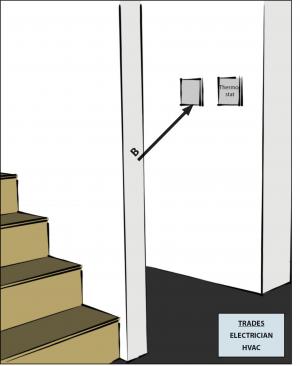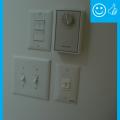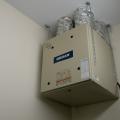Scope
Install readily accessible override controls for ventilation fans and exhaust fans that are set for continuous operation to meet ventilation code requirements.
- Locate the controls in one of three places:
- near the thermostat
- on the electrical panel
- on the switch plate or on or near the air handler.
- Identify the override control switch with a label and provide instructions for its use.
See the Compliance Tab for links to related codes and standards and voluntary federal energy-efficiency program requirements.
Description
To meet ASHRAE 62.2 ventilation requirements, the HVAC designer may specify that an exhaust fan should be set for continuous operation. In homes with continuously operating ventilation and exhaust fans, it is important for HVAC contractors and electricians to select fans that have override controls and that they locate the override controls in a location easily accessible to the homeowner. It is also important to properly label these controls. If controls are not properly labeled, fans may be mistakenly turned off.
For more on continuously operating exhaust fans and ASHRAE 62.2 requirements, see Obvious Ventilation Controls, Bathroom Exhaust Fans, Continuous Supply/Exhaust Fan Ratings, and Bathroom Fan Ratings.
How to Locate the Override Controls
The installer has three options for locating the override controls:
Locate the labeled control switch on a wall next to the thermostat. This creates a control center for the homeowner, allowing the homeowner to access the majority of the HVAC system controls in one place. This setup is ideal for ventilation systems, such as ERVs and HRVs that may be located in inaccessible places.

Figure 1. The ventilation controller is located next to the thermostat creating a control center for the homeowner. The ventilation controller has a manual override button. Locate a switch on the electrical panel with a label. In a house with multiple continuously running exhaust fans, all of the fans can be wired to one switch on the electrical panel. Because the switch is out of sight, although easily accessible, this option can help prevent the fans from being accidentally turned off.

Figure 2. In a home with several exhaust fans, all of the fans can be wired to one labeled switch at the electrical panel. Exhaust fan models that have an internal override system, either on the electrical switch plate or as defined in the manufacturer’s manual, can meet the requirement as long as the override is accessible. Figure 3 shows a ventilation controller for a central air handler fan. Figure 4 shows a bath exhaust fan ventilation controller that is installed in the outlet box under the switch plate. It can be set by the HVAC technician for continuous operation, delayed shut off, or a set amount of minutes each hour. The fan will run continuously or automatically come on once per hour for the set ventilation time. The occupant moves the toggle switch up to turn on the fan and light and down to turn the light off. The fan will run continuously or for a set delay time to meet the required ventilation amount. Any manual fan operation and delay operation will be subtracted from the ventilation time for that hour. To override or cancel the delay time, the occupants can move the toggle up again for at least 1 second then down again. The fan will shut off, canceling the set delay time.
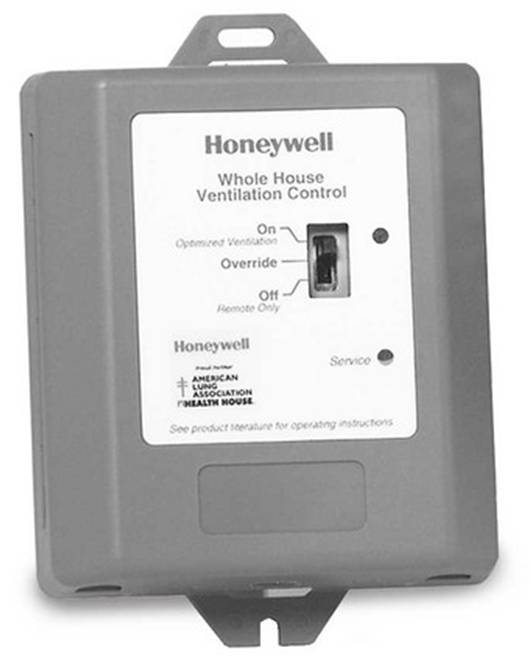
Figure 3. This ventilation controller, which has an obvious override switch, is located on a central air handler fan that is located in an accessible location. 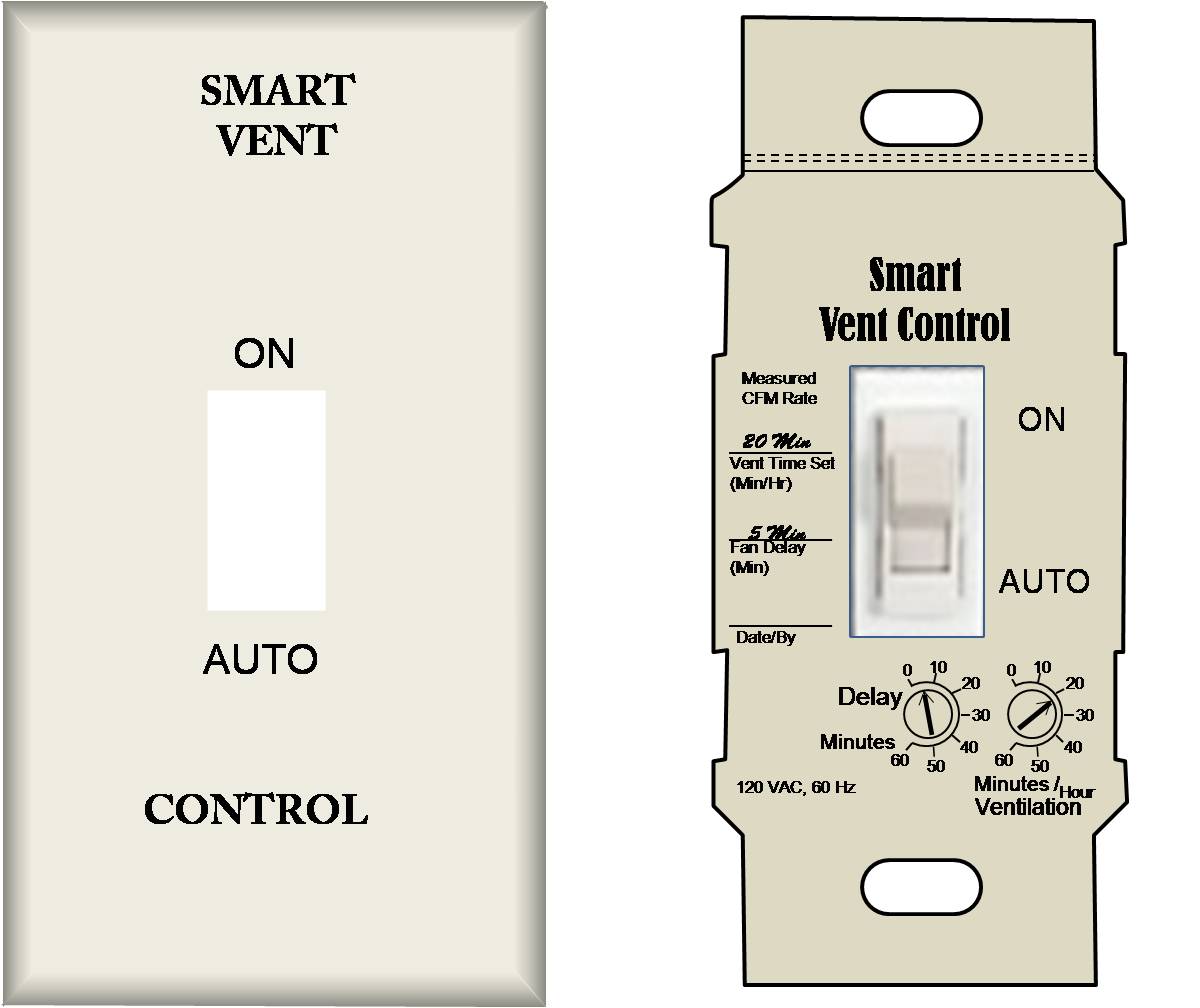
Figure 4. This bath exhaust fan ventilation control can be set by the HVAC technician for continuous operation, delayed shut off, or a set amount of minutes each hour. To override the delay time, move toggle up again for at least 1 second then down again, to shut off the fan, canceling the set delay time.
Success
In homes with continuously operating ventilation and exhaust fans, the HERS rater should inspect to ensure that the fans include readily accessible override controls.
Climate
No climate specific information applies.
Training
Compliance
Retrofit
SCOPE
If any exhaust fans currently exhaust into the attic, crawlspace, between floors, or into any other part of the home, replace the duct with one that exhausts to the outside. If the project will involve working in the attic, see the assessment guide, Pre-Retrofit Assessment of Attics, Ceilings, and Roofs.
For more on exhaust fan ventilation, see the U.S. Department of Energy’s Standard Work Specifications.
See the Scope tab for additional job specifications.
DESCRIPTION
If the home currently has no whole-house ventilation system, such as a heat recovery ventilator (HRV), energy recovery ventilator (ERV), or fresh air intake ducted to the central air handler fan, then code-required ventilation can be provided with an exhaust fan that is set to run either continuously or for timered intervals. If a new exhaust fan is installed and set for continuous operation, or if an existing fan is set for continuous operation, the override controls to turn off the exhaust fan if necessary should be clearly marked, as described in the Description tab.
COMPLIANCE
See Compliance tab.
More
More Info.
Access to some references may require purchase from the publisher. While we continually update our database, links may have changed since posting. Please contact our webmaster if you find broken links.
The following authors and organizations contributed to the content in this Guide.
Sales
High-Efficiency Fans = High-Efficiency Fans

High-efficiency exhaust fans and ceiling fans are more energy efficient and quieter than standard fans.

